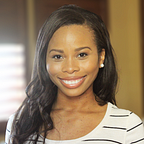How to Choose Your Brand Archetype (Part 1)
Taking a look at The Innocent, The Everyday Person, The Hero and The Caregiver + color palette ideas
After an in-class discussion on Jungian archetypes and brands, I became really fascinated by the power archetypes have. When applied to a product, a brand, a character, etc. they have this mystical way of drawing us in and capturing our hearts because they seem to speak to a deeper, ancient character or story within us. It is often said that there are no new stories and I think that applies to brand stories, as well.
This isn’t a negative thing, though. These age-old stories and characters have endured in society for a reason. And it seems to me that really successful brands and products take advantage of this.
To support my own learning, and share some insights with others, I’m writing about 4 of the 12 Jungian archetypes/personas in this article, hoping to write about the other 8 soon. I’m also sharing how these archetypes can more practically relate to brand development by sharing what a potential color palette might look like (with help from ColorHunt) for each archetype. Let’s take a look!
1. The Innocent
This archetype is characterized by a desire to be happy, light, and bright. It is often portrayed as a happy-go-lucky, naive, and trusting character who truly desires to uplift others. Pollyanna is a perfect example of this.
A popular brand that portrays this in my opinion is The Honest Company. They feature bright colors, floral illustrations, and smiley faces in their designs and use their copy to portray a sense of trustworthiness and honesty to their customers. The name itself is Honest!
For this archetype, I chose a simple color palette of open, bright, and joyful colors. The challenge with the Innocent archetype is that it can make a brand seem childish, instead of child-like. It’s a balance but there is just something fresh and airy about this archetype that I love.
2. The Every Person
This archetype is the down-to-earth, unpretentious, get along with everyone kind of character. Popular brands I think of when I consider the Every Person archetype are Bud Light and Hungry-Man. They’re affordable, ubiquitous, and speak to the kind of person who sees themselves as a “regular” guy or girl. They aren’t “pretentiously” seeking out small-batch, craft beer or organic brown rice and tofu bowls like “those people.” I think this archetype is easily applied to sports teams and fast food restaurants.
For this archetype, I chose a palette that could evoke a neighborly, virtuous, non-offensive vibe. Blue is considered to be the most liked and least offensive color, with estimates saying 50% of all logos are blue or feature the color prominently.
3. The Hero
This is a popular archetype for athletic brands like Nike or Under Armour, as well as for politicians and the armed forces. The Hero archetype stands for justice, making the world a better place, being strong and confident, and is, in some ways, a force to be reckoned with. One brand that strongly taps into this archetype is the US Military.
This ad from the US Marines speaks to someone’s inner desire to push themselves (and others) to be their very best. The photography shows two service members side by side, looking and pushing themselves forward, aligning perfectly with the copy. Towards the bottom of the ad, the message is clear — “honor,” “courage,” “commitment,” and “strength” are what make a Marine, and potentially you, a hero.
For this color palette, I wanted to bring depth and grit to a grouping that could easily skew Americana, when that may not work for a diversity of applications. I think the hero color palette should have saturation/depth, vibrancy, and maybe even a little nostalgia.
4. The Caregiver
This archetype is perfect for brands that want to express caring and nurturing values to their audience. The Caregiver is kind, maternal, patient, and deeply compassionate. During our class discussion on this archetype, I immediately thought of the Kaiser Permanente “Thrive” campaign and brand. The ads are really warm, soft, and family-oriented. Even the voice-over for the television and radio ads feature a kind, grandmotherly, and loving-sounding woman who encourages patients to “thrive.” A recent commercial ends with this line: “Here’s to you all who see everyday as an opportunity to thrive, your way.” I think that makes perfect sense for brands in the healthcare, non-profit, social services, and even B-corp spaces.
I knew I wanted this palette to feature some sweet pinks or roses to evoke the sentiment of maternal care but I also wanted something soothing and calming. I really like the way these four colors play with one another and feel it perfectly captures the mood of the Caregiver archetype. I am particularly drawn to the bright periwinkle shade (third from the left) because I also envision caregivers as “mama bears” that can be fierce when needed. That little ping of blue gives me that sense while the lighter pinks are lovely and the dark blue is soothing and grounding. I think this may be my favorite color palette of the four. I wonder if this subconsciously hints at my own personal archetype?!
I hope this inspires you to apply an archetype (or a combination of ones) to your next brand project to stand out and speak to your perfect audience.
Happy designing!
